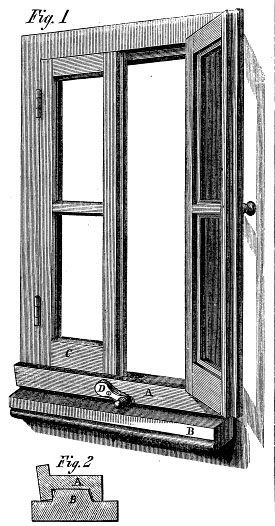These windows, so very elegant in appearance, and convenient in domestic architecture, have long labored under the disadvantage of not being weather-tight; and, as the same form of window properly prevails in English Gothic and Italian styles, it has been a source of much trouble to builders. The difficulty arising from shrinkage was deemed insurmountable; and architects were forced to insert casings in the walls over their windows, into which the lower sash, being one third longer than the upper one, could slide up, so as to leave an entrance to a balcony or piazza. In this way they had to avoid the use of the casement or French sash. Casements made to slide back into the sides are the exemplification of an old method of avoiding the difficulty. But they have objectionable features also, not the least of which is the expense of casing.. The accompanying illustration represents a simple and most effective device to the end of obtaining a really water-tight window.
As may be plainly seen in the cut A, Fig. 1, represents the slip; B, the window-sill; C, the bottom rail of the window-sash; and D, the button-lift. In Fig. 2, A shows the slip, and B the window-sill.

